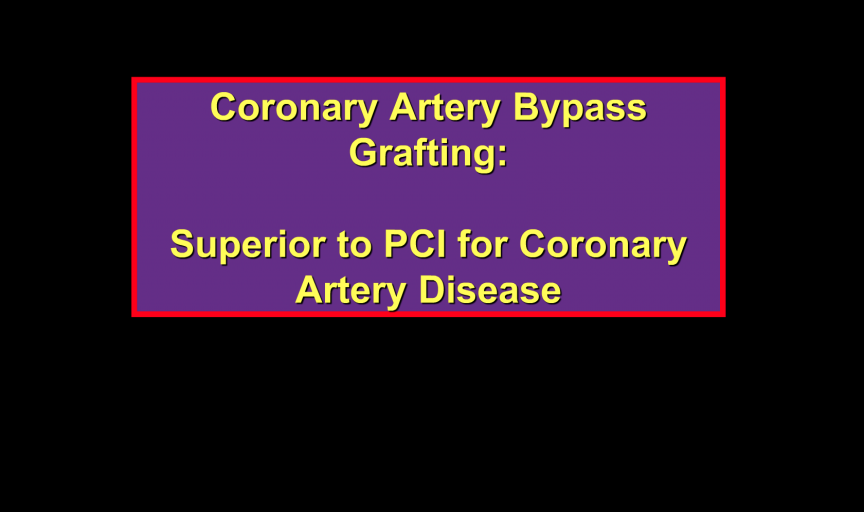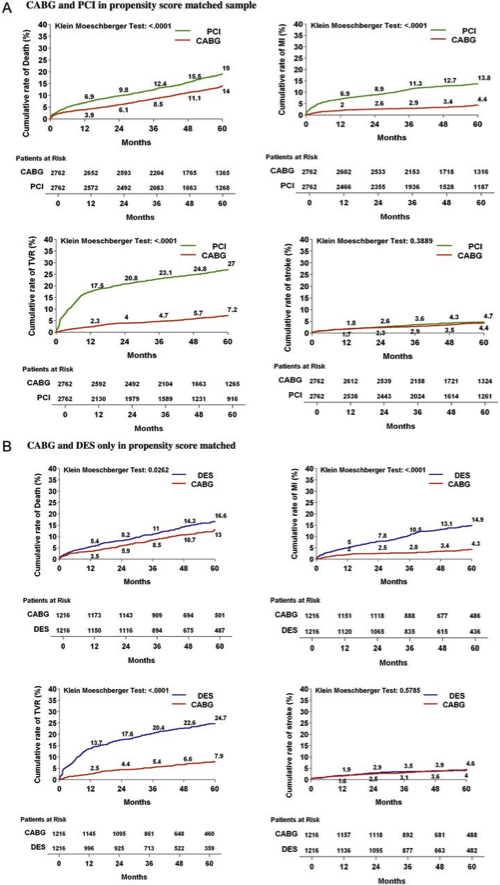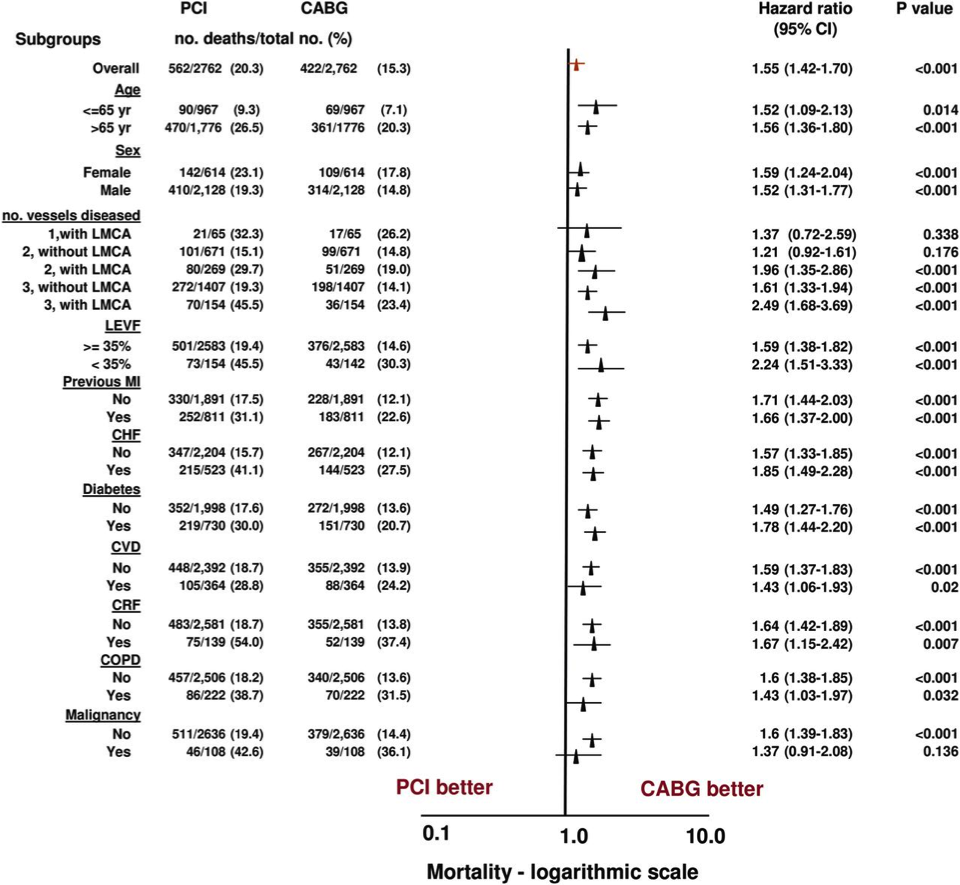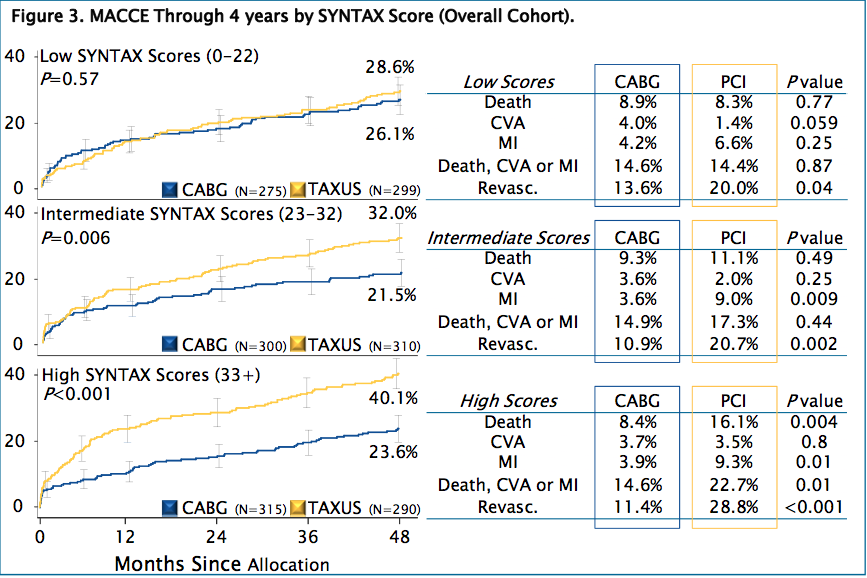CABG Superior to PCI in long-term treatment of coronary artery disease
As shown in SYNTAX and other studies, CABG is associated with significantly lower rates of death, myocardial infarction (MI) and target vessel revascularization (TVR) vs. PCI.
A regional study from Italy[1], published on April 28,2013 in the European Journal Cardio-Thoracic Surgery, compared 5-year rates of death, MI, TVR and stroke in a large cohort of patients with left main coronary artery (LMCA) or multi-vessel disease, treated with CABG or PCI (with or without DES) or PCI with DES only:
|
Total |
PCI |
CABG |
|
11750 |
6246 |
5504 |
Patients with Left Main Coronary Artery Disease (LMCA) or at least two other coronary vessels treated with PCI or CABG from 1 July 2002 to 31 December 2008 were followed through December 2010.
Associated valve disease, previous coronary revascularization, a recent (<24 h) STEMI or shock, were reasons for exclusion.
PCI was associated with a higher risk of death (HR = 1.6; 95% CI 1.4–1.8, P < 0.0001), MI (HR = 3.3; 95% CI 2.7–4.0, P < 0.0001) and TVR (HR = 4.5; 95% CI 3.8–5.2, P < 0.0001) at 5 years. No significant difference was shown for stroke (HR = 1.1; 95% CI 0.9–1.4, P = 0.43). The CABG benefit was more evident in the risk of death in patients with two-vessel disease plus LMCA and in those with three-vessel disease, LVEF <35%, congestive heart failure and diabetes. Adjusted comparison with PS between PCI with DES only and CABG confirmed significant differences in favor of CABG for mortality, MI and TVR rates. Risk analysis showed that the difference in mortality rate was due to higher rate of MI in PCI.
In patients with LMCA plus one-vessel disease or two-vessel disease without LMCA, differences in mortality rates between both treatment groups showed a trend towards better outcome with CABG, although statistical significance was not reached.
Finally, patients treated with DES only and similar patients treated with CABG confirmed significant differences in favor of CABG in rates of mortality for all causes, MI and TVR. No significant difference was found for stroke.
Kaplan–Meier risk curves between CABG and PCI:
Subgroup analyses: hazard ratio of death at 5 years:
This comparative study is remarkable in that CABG once again proved superior in every risk factor examined, including mortality and this time, also the the incidence of Stroke. Even in patients with less severe coronary artery disease better outcomes were observed with CABG.
In comparison with SYNTAX, a major difference with CABG was the much higher TVR rate in PCI, but the initial higher stroke rate in CABG leveled off after 5 years:
[1] Fortuna D et al. Eur J Cardiothorac Surg 2013;ejcts.ezt197




